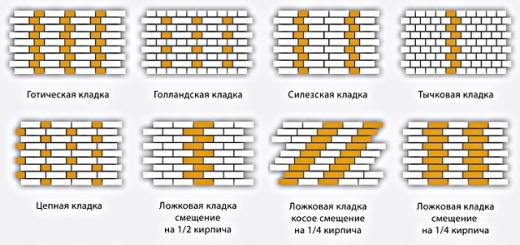The White House issued a resolution allowing the rate on soft loans to small and medium-sized businesses to be lowered to 6.5%. Until now, loans under the "Program 6.5" were issued by authorized banks with the approval of the SME Corporation at 9.6-10.6% per annum. Now the budget compensates the difference to the banks participating in SME lending, and banks that issue commercial loans on similar terms will also be able to receive a subsidy. Experts call the decision a "breakthrough" and expect a peak in the issuance of loans in February-March.
The government published a decree signed on December 30, 2017 by Dmitry Medvedev on the rules for subsidizing banks lending to small and medium-sized businesses on favorable terms - at 6.5% per annum. The size of the subsidized interest rate will be 3.5% for small businesses and 3.1% for medium-sized businesses, the term of a preferential investment loan is up to ten years, and the revolving loan is no more than three years. The document was prepared by the Ministry of Economy for almost a year as part of the Small Business priority project - it is supervised by First Deputy Prime Minister Igor Shuvalov. Banks that have not yet been funded by the Bank of Russia, and those 49 authorized banks that already receive funds from the Central Bank and issue preferential loans under the 6.5 Program, will be able to receive a subsidy. At the same time, according to the "Program 6.5", funds at 6.5% per annum were allocated to banks by the Central Bank itself - they cost SMEs 9.6–10.6% per annum. This difference will now have to be compensated by the budget to credit organizations. The program limit is 175 billion rubles, of which 107 billion rubles. already selected by SME Corporation and SME Bank at the end of December 2017.
Preferential loans at 6.5% per annum will be issued on terms similar to those of the 6.5 Program for projects in priority sectors - agriculture, manufacturing, construction, transport and communications, tourism, healthcare and waste management.
As the head of Opora Rossii, Alexander Kalinin, notes, the new program is a very popular product, it "combines two mechanisms - funding from the Central Bank and compensation for banks' margins from the federal budget, which will eventually allow entrepreneurs to get a really soft loan." According to his estimates, small businesses will run out of limits already in the first quarter - but conditions need to be softened: the threshold for loans issued from 5 million rubles should be lowered. up to 3 million rubles and expand the list of priorities - including, for example, logistics. Also, Opora Rossii notes that the budget of the new program is less than 1 billion rubles, that is, the volume of lending will be 50 billion rubles, which is not enough: “a minimum of 150 billion rubles is required.” In general, Opora hopes that as a result, the volume of lending to SMEs will return to the figure of 2014, approaching 5 trillion rubles.
Alexey Poroshin, head of the Business Russia Center for Financial and Credit Support for Business, notes that business was looking forward to lowering rates: inflation for the year was 2.5%, and the key rate was reduced by the Central Bank to 7.75%. “Now there are good conditions for modernization, for launching new production facilities, and preferential loans are a good help. Many, in anticipation of lower rates, decided to take out loans already in 2018. We can talk about deferred demand for loans,” he notes. The peak of lending, according to him, will be in February-March, when "everyone will be able to grab his jackpot until the limits are exhausted." According to the Business Russia Center for Financial and Credit Support, the share of Program 6.5 in the SME loan portfolio was about 2%, at rates of 6.5% it can grow to 3-3.5%, and the share in 5% "will be a key objective for development institutions in the near term."
What is the "Program 6.5" for lending to small and medium-sized businesses?
Business always needs money, and if there is an opportunity to get a loan for the development of your business on favorable terms, this can only be called a gift. At the same time, not everyone knows that there is a state mechanism for financial support for small and medium-sized businesses, implemented thanks to the SME corporation. What is this mechanism and how to use it, representatives of PJSC Sberbank told.
Before talking about loans, please explain what kind of corporation such a "SME" is?
JSC "Federal Corporation for the Development of Small and Medium Enterprises" operates in accordance with Federal Law No. 209-FZ of July 24, 2007 "On the Development of Small and Medium Enterprises in the Russian Federation". The shareholders of the Corporation are the Russian Federation (represented by the Federal Agency for State Property Management) and the State Corporation "Bank for Development and Foreign Economic Affairs (Vnesheconombank)". Joint Stock Company "Russian Bank for Support of Small and Medium Enterprises" (JSC "SME Bank") is a subsidiary of the Corporation. The Corporation ensures the fulfillment of the obligations assumed by NDKO AKG JSC.
We figured it out, but what does Sberbank have to do with the corporation?
Sberbank PJSC has been accredited by the Federal Corporation for the Development of Small and Medium Enterprises Joint Stock Company (SME Corporation) as an authorized bank to participate in the Lending Stimulation Program for Small and Medium Enterprises.
In particular, Sberbank is implementing Program 6.5 with incredibly interesting business conditions.
Wow, how serious. You said that there is a whole program to stimulate SMEs, could you explain in more detail?
The program is a state mechanism for financial support of small and medium-sized businesses (SMEs) and is implemented by the SME Corporation in the framework of cooperation with the Bank of Russia.
The provision of concessional loans under the Program opens up significant opportunities for ensuring the availability of long-term investment and revolving loans for small and medium-sized businesses in the implementation of significant projects in priority industries.
And what amount can I count on under the "Program 6.5"
The offer range is quite large - it all depends on what you are going to borrow money for. In general, you can get from 10 million rubles. up to 1 billion rubles inclusive.
For what purposes can I get a loan under this preferential program?
Since the loan is issued to stimulate business, it is logical that it means:
Investment goals - financing of measures for the acquisition of fixed assets, modernization and reconstruction of production, launching new projects / productions. It is allowed to finance current expenses related to the implementation of an investment project (no more than 30% of the total value of investment loans).
Replenishment of working capital in the following priority sectors:
- Agriculture / provision of services in this area;
- Manufacturing industry, incl. food production, primary and subsequent processing of agricultural products;
- Production and distribution of electricity, gas and water;
- Construction, transport and communications;
- Domestic tourism;
- High tech projects.
Is the interest rate the same for small and medium businesses?
Banks are beginning to issue loans to small and medium-sized businesses at 6.5% per annum. The difference to the participating banks is compensated by the budget. Experts expect the peak of issuing loans in February-March and call the current benefits an unprecedented step by the state towards the development of entrepreneurship.
The list of banks participating in the program of concessional lending to small and medium-sized businesses at a rate of 6.5% has been determined
The Ministry of Economic Development has determined the list of banks participating in the program of concessional lending to small and medium-sized businesses at 6.5%, as well as monetary limits for the program.
Entrepreneurs can get a soft loan in 15 banks: VTB Bank, Sberbank, Rosselkhozbank, Bank Accept, Alfa-Bank, CB Association, Bank Levoberezhny, Bank Intesa, Zapsibkombank, SME Bank , SKB Primorye Primsotsbank, RosEvroBank, Bank St. Petersburg, RNKB Bank, TKB Bank.
They will be provided with subsidies from the federal budget to compensate for lost income on loans issued to small and medium-sized businesses for the implementation of projects in priority sectors at a reduced rate.
“We saw how demanded by business was the concessional lending program last year. This year it has become even more attractive - the final rate does not exceed 6.5%. Terms of concessional lending - 10 years for investment purposes and 3 years - for negotiable. During February, the first entrepreneurs will already be able to receive loans on these terms,” said Minister of Economic Development of the Russian Federation Maxim Oreshkin.
Loans will be issued for projects in priority sectors, including agriculture, manufacturing, construction, transport and communications, tourism, healthcare and waste management, as well as catering and personal services.
Entrepreneurs who implement projects in single-industry towns and regions of the Far Eastern Federal District can take part in the program on special terms.
The updated "Program 6.5%" has started
The final rate for borrowers under the updated program will be 6.5%. The size of the subsidized interest rate under the "6.5% Program" is 3.5% for small businesses and 3.1% for medium ones. The term of a preferential investment loan is up to ten years, and a revolving loan is no more than three years.
Entrepreneurs can get a soft loan under the "6.5% Program" in 15 banks: VTB Bank, Sberbank, Rosselkhozbank, Acceptance Bank, Alfa-Bank, CB Association, Livoberezhny Bank, Intesa Bank, Zapsibcombank, SME Bank, SKB Primorye Primsotsbank ”, RosEvroBank, Bank St. Petersburg, RNKB Bank, TKB Bank. It is these players who will receive subsidies from the federal budget to compensate for lost income on loans issued to businesses.
Loans are issued for projects in priority sectors. These are agriculture, manufacturing, construction, transport and communications, domestic tourism, healthcare, manufacturing, distribution of electricity, gas, water, high-tech projects, waste disposal, says Vladislav Abramov, manager of Kazansky NGO of Alfa-Bank.
“The program does not provide for lending to the production and sale of excisable goods,” the expert clarifies.
The subsidy program is an unprecedented step by the state towards the development of small and medium-sized businesses in Russia, says Mikhail Volkov, Director of the Small and Medium Business Department at Intesa Bank.
“It provides an opportunity for a wide range of SMEs to attract affordable credit resources, reduce the cost of production and increase the competitiveness of the enterprise,” explains Volkov.
Preferential loans - "more than in demand"
"We will collect all the information from the field, coordinate activities so that the program works effectively," the minister promised.
Why do banks refuse loans?
Even if it seems to you that the business fully complies with the requirements of preferential lending programs, banks may refuse to issue a loan.
Within the framework of existing programs, the bank independently checks the compliance of projects and end borrowers with their requirements. Therefore, among the key factors that borrowers should pay attention to, Vladislav Abramov highlights a positive financial result according to the financial statements for the previous calendar year, as well as the absence of tax debts and fees.
As the reason for the refusal, Abramov notes the high degree of optimization schemes and the extremely high burden on the borrowing enterprise. Also, according to him, as a reason for refusal, there may be a high risk of misuse of credit funds, or failure to fulfill obligations of an affiliated company to another bank.
Evgeniy Filyk, Head of the Sales Methodology Department of the Small Business Sales Directorate of AK BARS Bank, recommends that the borrower be as open as possible with the bank when providing information about the current loan load and plans for using the loan.
“The task of the bank is to satisfy the client's real needs for financing and provide him with the most comfortable conditions for repaying the loan. If you want to purchase equipment, you should tell the loan officer about it. It is not necessary to say that you just would like to replenish working capital by purchasing goods. In this case, the bank will offer a more comfortable, long term loan, and there will be no problems with controlling the targeted use of credit funds.”
Filyk says that a company applying for a soft loan should not hide the company's existing debts and debts on loans and borrowings.
“It's no secret that almost all banks cooperate with the largest credit bureaus. If we see that the borrower is open, then the bank will offer an individual loan repayment schedule or a repayment deferral - up to one year, so that it is convenient for the borrower to pay off current creditors.
In general, according to bankers, two criteria are the most important for a lender - the presence of an operating business that has been operating for at least 6 months, and the desire of the owner to develop the business, the existence of a strategy for its development.
“The rest is details. The bank will select a loan product based on the needs and capabilities of the business — secured or unsecured, long-term financing, refinancing of the current loan portfolio, etc.,” Yevhen Filyk concludes.
Ksenia Dolgova
This program was developed by the SME Corporation jointly Ministry of Economic Development of Russia and the Bank of Russia.It is aimed at stimulating lending to small and medium-sized businesses (SMEs).
The subjects of lending under this program can be:
SMEs that meet the criteria described in Federal Law of July 24, 2007 No. 209-FZ "On the development of small and medium-sized businesses in the Russian Federation";
Leasing companies financial leasing services(leasing) to SMEs ;
Organizations managing SME support infrastructure facilities ;
M FIs providing services to SMEs microfinance (microloans).
Loans can only be provided by banks accredited by the SME Corporation.
In accordance with the terms of the program, the interest rate on the loan is fixed at 9.6% per annum for medium-sized businesses and 10.6% per annum for small businesses. Financing is provided in the amount of 5 million to 1 billion rubles for a period of up to three years. By agreement with the bank, the term can be extended, but already at the bank's standard lending rates.
The funds provided under this program can be used to cover capital costs (not less than 70% of the amount of financing) and operating expenses (not more than 30%).
List of sectors of the economy for the purposes of implementing the Program to stimulate lending to small and medium-sized businesses
1. Agriculture, including the production of agricultural products, as well as the provision of services in this sector of the economy, including for the purpose of ensuring import substitution and the development of non-commodity exports.
2. Manufacturing industry, including food production, primary and subsequent (industrial) processing of agricultural products, including for the purpose of ensuring import substitution and development of non-commodity exports.
3. Production and distribution of electricity, gas and water.
4. Construction, including as part of the development of domestic tourism.
5. Transport and communication.
6. Tourism activities and activities in the field of the tourism industry in order to develop domestic tourism.
7. Health activities.
8. Collection, processing and disposal of waste, including sorted materials, as well as processing of metal and non-metal waste, garbage and other items into secondary raw materials.
9. Sectors of the economy that implement priority areas for the development of science, technology and technology in the Russian Federation, as well as critical technologies of the Russian Federation, the list of which is approved by Decree of the President of the Russian Federation dated July 7, 2011 No 899 “On approval of priority areas for the development of science, technologies and equipment in the Russian Federation and the list of critical technologies of the Russian Federation”.










